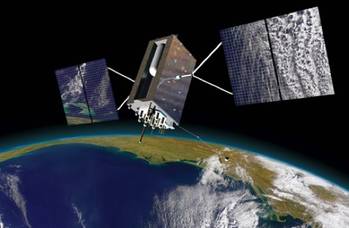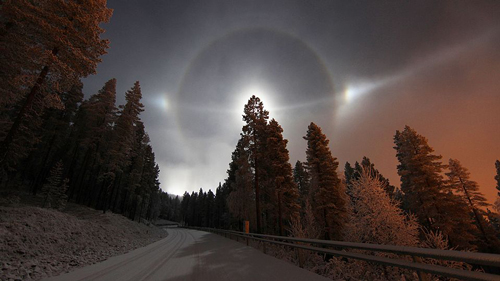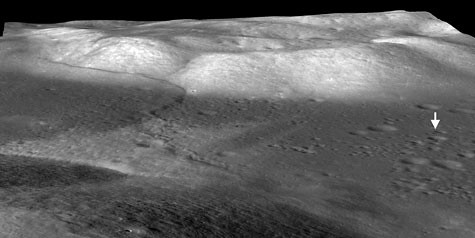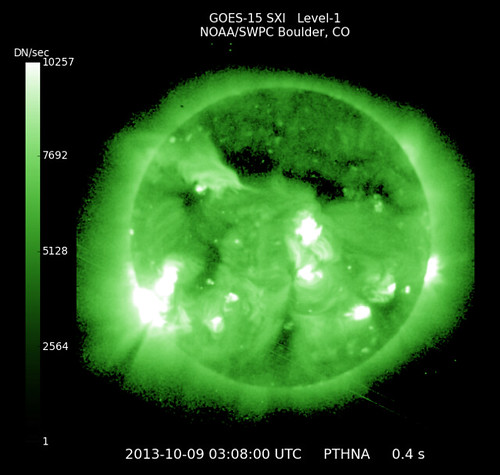WBMSAT Satellite Industry News Bits 03/21/2014
Sunday, March 23rd, 2014High winds delay launch of Astra 5B and Amazonas 4A.
[Broadband TV News – 03/21/2014]
Satellites pick up two significant objects in the southern Indian Ocean southwest of Australia, one estimated at 78 feet long, and ships are steaming quickly toward both.
[Hot Air – 03/20/2014]

Malaysia Airlines Jet – NDTV file photo
Missing flight MH370 puts spotlight on satellite technologies that could ensure tracking and communicating with aircraft over water and uninhabited areas.
[NDTV Gadgets – 03/20/2014]
Congress acknowledges need for new acquisition models for DOD to obtain needed satellite bandwidth – recorded Federal News Radio panel discussion with SES GS CEO and
government officials and consultants.
[Federal News Radio – 03/20/2014]
NewSpace Global releases 2014 SmallSat report examining global industry leaders, major investors, and sources of revenue in this sometimes obscure market.
[SatNews – 03/20/2014]

KazSat-3 at the testing and assembling division of Baikonur cosmodrome. ©RIA Novosti
KazSat-3 being readied for shipment to Baikonur.
[Tengri News – 03/20/2014]
Orbital drops antitrust lawsuit against United Launch Alliance.
[Space News – 03/20/2014]
Es/HailSat solicits bids for second satellite.
[Space News – 03/20/2014]
RRsat plans expansion in US market, opening a new office in the United States.
[Via Satellite – 03/20/2014]
Exelis installs its satellite communications on-the-move technology into the U.S. Army Stryker vehicle during the Army Expeditionary Warfighting Experiment at Fort Benning, GA.
[Executive Biz – 03/20/2014]
M7 group selects EUTELSAT 9A to launch its new pay-TV platform in Hungary.
[Satellite Evolution Group – 03/20/2014]
Speedcast strengthens it leadership position in the Asian maritime market with new facilities in Singapore.
[Satellite Evolution Group – 03/20/2014]
SES reaches 291 million TV homes around the world, with 151 million in Europe; sees room for growth in Latin America.
[Via Satellite – 03/19/2014]
DMSP-19 encapsulation within the Atlas V launch vehicle payload fairing represents an important milestone for the DMSP-19 launch campaign.
[Los Angeles AFB – 03/19/2014]

Arianespace launch – Satellite Evolution Group file photo
Arianespace calls for opening of U.S. government market to international launch services competition.
[Satellite Evolution Group – 03/19/2014]
Head of Germany’s space agency urges ESA to scrap the favored Ariane 6 plans.
[Space News – 03/19/2014]
Gogo receives supplemental type certificate from FAA to install Ku-band satellite connectivity service on Airbus A330 aircraft.
[Yahoo Finance – 03/19/2014]
Inmarsat signs contract with Hughes Network Systems to manufacture the new Low Profile BGAN terminal.
[Satellite Evolution Group – 03/19/2014]
Globecomm Maritime forms a strategic relationship with Future Care, Inc, to create Future Care Live, a video-enabled telemedicine solution.
[Satellite Evolution Group – 03/19/2014]
Gilat introduces StealthRay 300X-M Low-Profile Ultra-Compact X-Band Satellite-on-the-Move Antenna.
[ThomasNet News – 03/19/2014]
RSCC and Thales Alenia Space successfully launch two new Russian communications and broadcasting satellites, Express At1 and At2.
[Via Satellite – 03/18/2014]
Former Arianespace chief says SpaceX has advantage on cost in testimony to French Senate.
[Space News – 03/18/2014]

GeoStar 3 platform – Space Daily file photo
Orbital introduces the GEOStar-3 commercial communications satellite platform.
[Space Mart – 03/18/2014]
Pentagon weaning itself from controversial bandwidth lease with Hong Kong firm.
[Space News – 03/18/2014]
Ball Aerospace powers on bus of the first Joint Polar Satellite System (JPSS-1) satellite for the first time.
[Yahoo Finance – 03/18/2014]

File photo CCL3 – MarineLink.com
An alliance between France’s Orolia, and Transas Group aims to integrate Maritime Domain Awareness (MDA) and Search and Rescue (SAR) functionality into enhanced marine communication solutions.
[MarineLink – 03/18/2014]
Harris Broadcast splits into two separate companies: Imagine Communications and Gates Air.
[Via Satellite – 03/18/2014]
Gogo’s business group Aircell unveils its ST 4300, a new in-flight communications system for business aircraft.
[Via Satellite – 03/18/2014]
Elektrobit completes a multi-year study with European Space Agency (ESA), analyzing the benefits of using multiple antennas (MIMO) in satellite communications.
[CIOL – 03/18/2014]
Airbus Defense and Space launch new high throughput satcom services featuring Ku-, X-, and Ka-bands without need to change antenna systems.
[Space Daily – 03/18/2014]
Gilat SkyEdge II-c Capricorn IP Router offers throughput exceeding 200 Mbps.
[Thomas Net – 03/18/2014]
Moscow accuses Ukraine of electronic attack on satellite.
[Free Beacon – 03/17/2014]
M2M satellite communication market to grow at a CAGR of 9.8% to 2019 according to RnRsMarketResearch report.
[Satellite Spotlight – 03/17/2014]
Global Satellite Communication market in the Oil and Gas industry is to grow at a CAGR of 5.74 percent over the period 2013-2018.
[Live – PR – 03/17/2014]
Arab satellite pay-TV market expected to grow at steady pace from 2014 to 2017, with room for more entrants into the market.
[Via Satellite – 03/17/2014]
Azerbaijan and Argentina to cooperate in outer space.
[azernews – 03/17/2014]

kangshutters/shutterstock.com – CGN
GSA renews satellite-based training network contract with Hughes Network Systems.
[GCN – 03/17/2014]
Orange Business Services joins European Union to assist in development of cloud-based ship management platform.
[Via Satellite – 03/17/2014]
Satellite signals can confirm plane’s identity.
[KETV – 03/17/2014]

PlanetLabs small satellite – New York Times
Start-up Planet Labs aims to conquer space market, launching dozens of small satellites to provide near constant observation of Earth.
[New York Times – 03/16/2014]
Arabsat issues an RFP for four new satellites, to be designated HS3, HS4, AR6E and AR6A.
[Broadband TV News – 03/16/2014]
Gilat Satellite Networks chosen by Inmarsat as Gobal Xpress services partner for new fixed land VSAT opportunities.
[Space Ref – 03/16/2014]

TECOM antenna – Avionics Intelligence
Ka-band tail-mounted satellite communications antenna for in-flight Internet connectivity introduced by TECOM.
[Avionics Intelligence – 03/16/2014]
VSAT Auto-commissioning systems enable accurate VSAT pointing, crosspol, and power adjustment, providing feedback to the installer from a carrier monitoring system over the VSAT link.
[SatMagazine – March issue]
WBMSAT satellite communications consulting services












